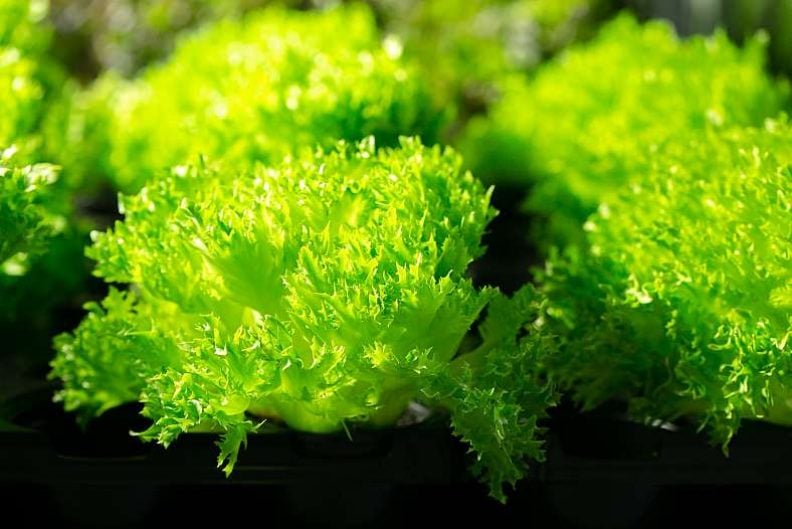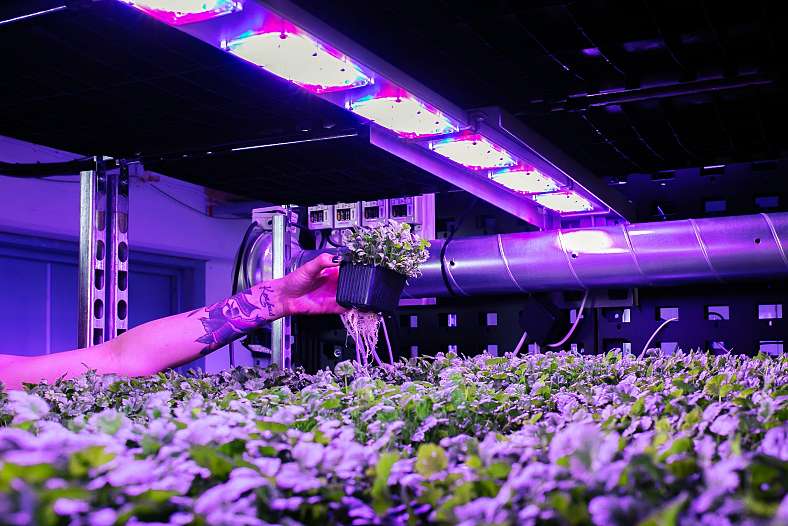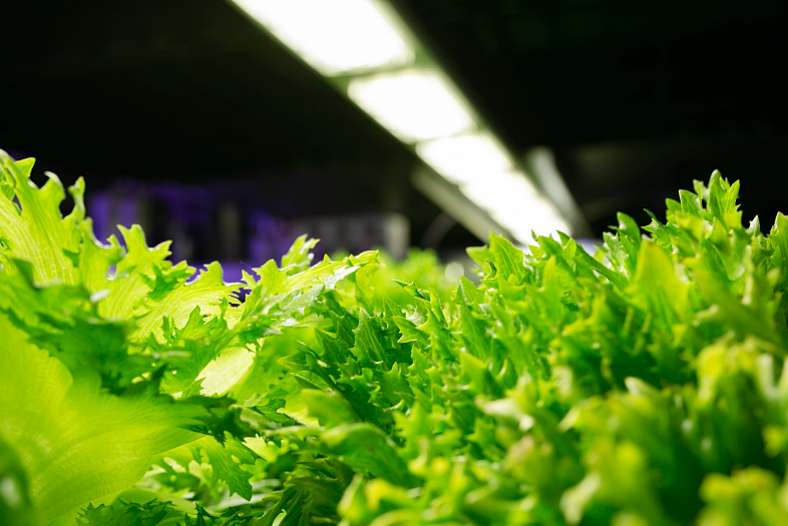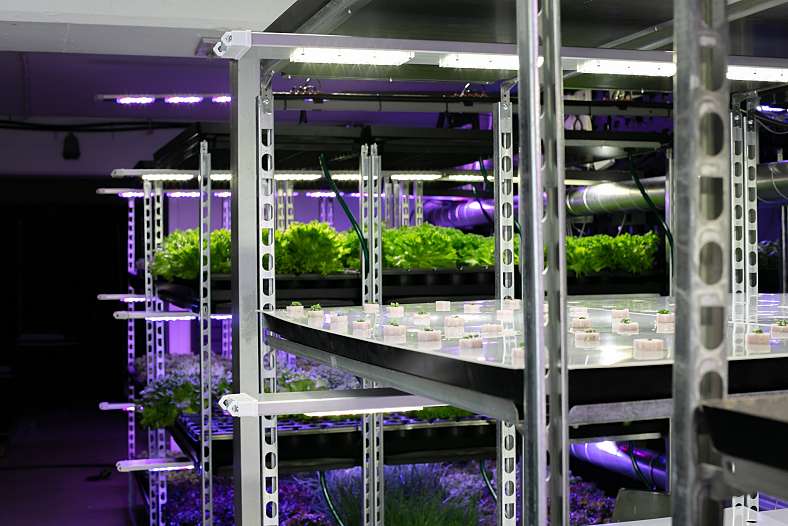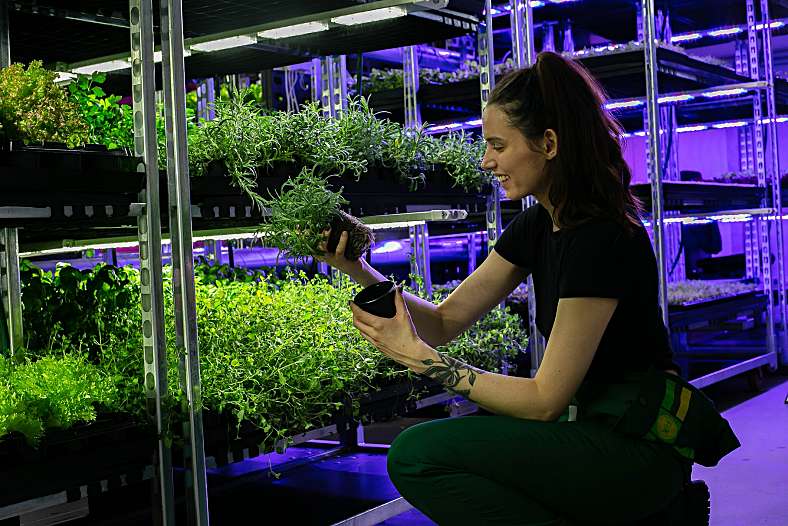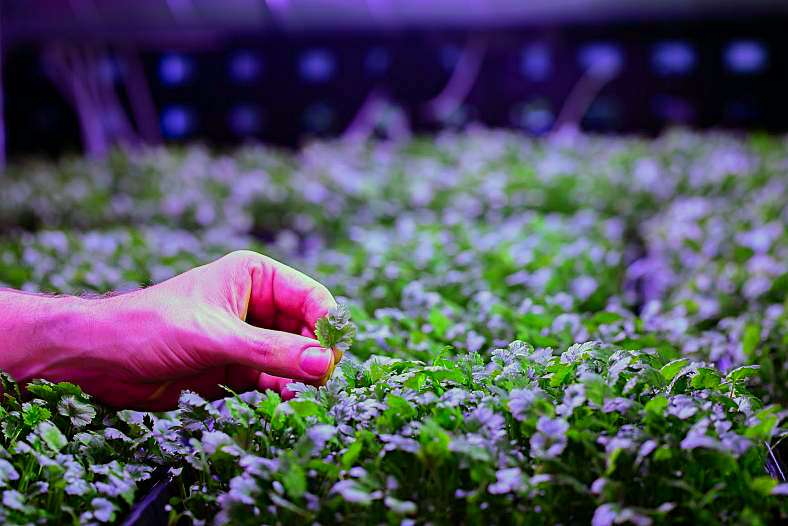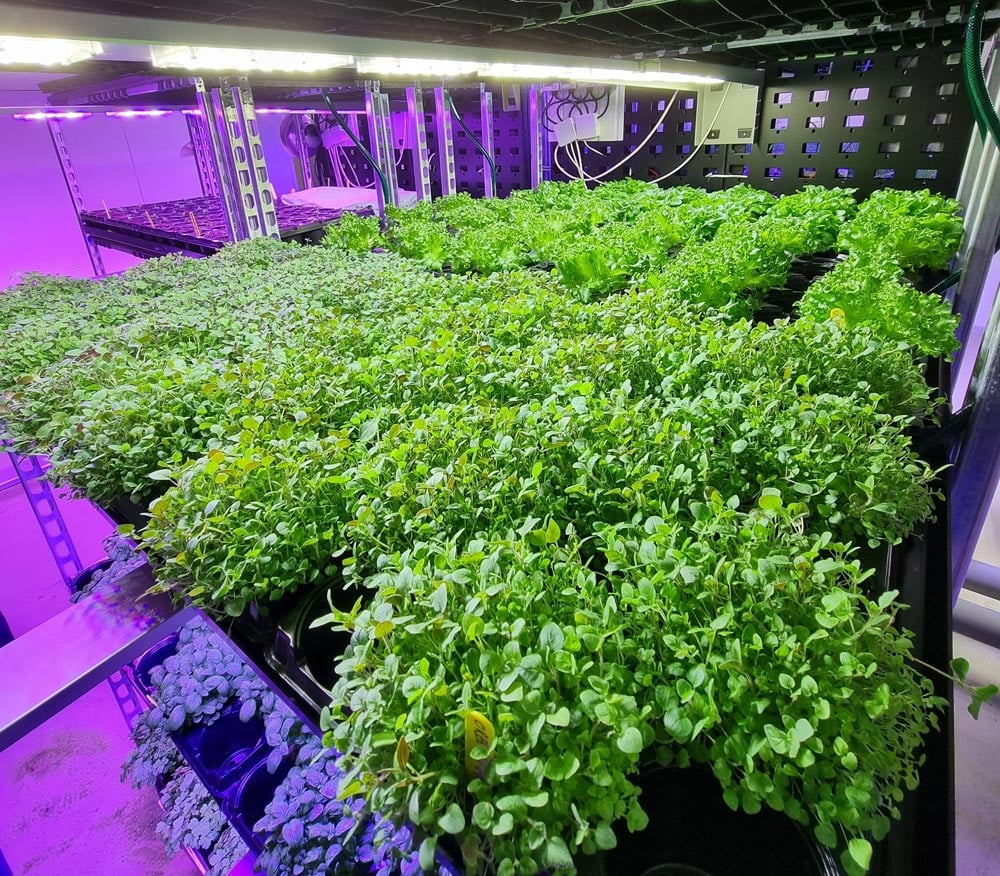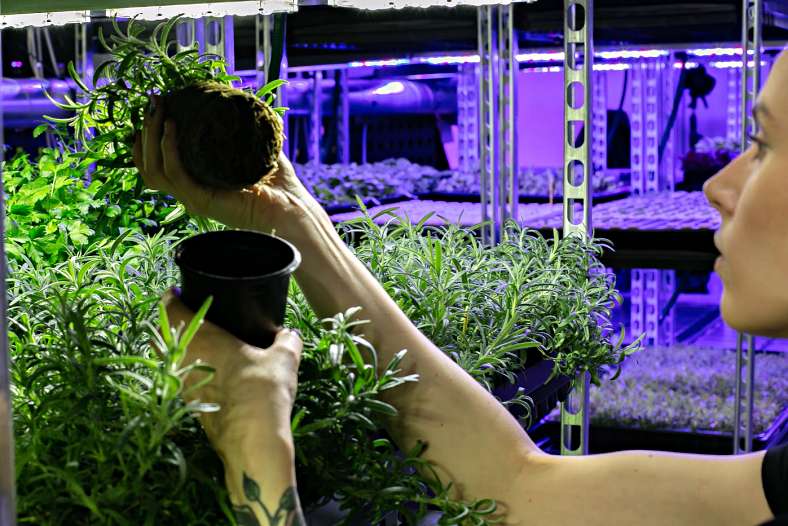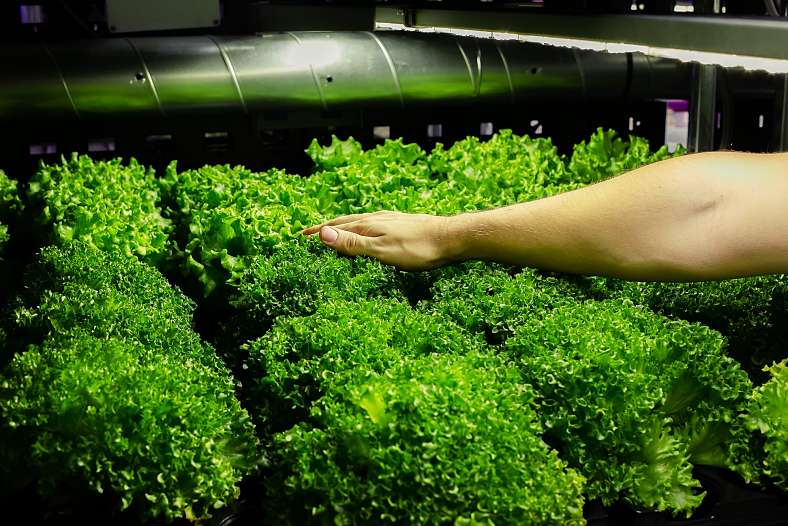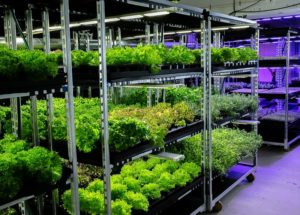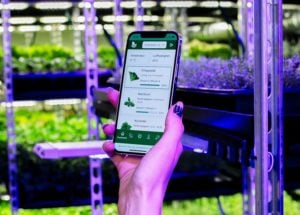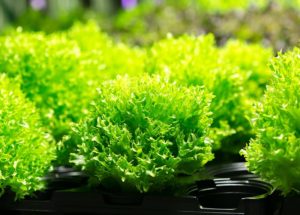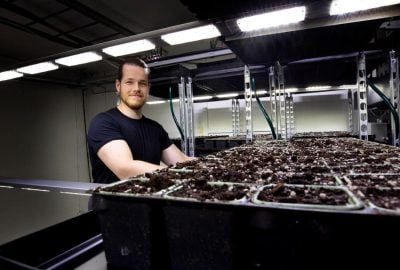Thanks to technological breakthroughs, Controlled-Environment Agriculture (CEA) is taking off worldwide. Mainly, there are two types of CEA: Vertical farming and greenhouse farming. So which is best for you?
Before 2050, the earth’s population is expected to exceed 9 billion. To produce enough food to feed all these people, we don’t have the luxury of choosing forms of food production. We need them all; vertical farming, greenhouse farming, and traditional farming.
However, we can choose the most suitable production method for any given location. To make the best choice, we first need to investigate the advantages and disadvantages of vertical farming and greenhouse farming.
What about traditional farming, you say? Check out our article «Vertical farming – From concept to profit» to learn about the advantages of vertical farming as opposed to traditional farming.
What is the difference between vertical farming and greenhouse farming?
There are significant differences between these two production methods, both regarding resources and results. More importantly, the ideal locations for vertical farms and greenhouses are very different.
CEA in greenhouses has much longer traditions than vertical agriculture. It is something most people are familiar with. Lately, though, vertical farming has taken CEA to a new level. Over the last decade, CEA has been booming like never before, thanks to new modes of production.
In a greenhouse, you plant the crop indoors in one layer. This production facility consists of walls and ceilings made of glass or plastic that let in sunlight. These are semi-controlled climates.
Vertical farming, on the other hand, is a newer invention. This planting technique places crops in vertically stacked layers.
In such production, LED lights are often accompanied by a hydroponic growth and irrigation method (there are several other cultivation methods).
Even though both types of productions are climate-controlled, they take place in very different types of buildings. Vertical farming is based on very accurate adjustments of temperature, humidity, lights, and more. This requires certain kinds of infrastructures.
Vertical farming has the advantage of being adaptable to many kinds of buildings. They might need some retrofitting for ventilation systems, LED grow lights, and other equipment, but building a new facility is rarely necessary.
Different production costs
At first glance, it is more expensive to engage in vertical farming than it is to engage in greenhouse farming. It can also be somewhat more expensive per square meter.
This has to do in particular with the need for infrastructure for operations. Still: If you have a building you can remodel, it will probably be cheaper to turn it into a vertical farm than to build new greenhouses.
Both methods allow you to harvest pesticide-free crops. You can also offer products that are locally grown throughout the year. The plants also have a higher nutrient content than similar products grown outdoors and farther away.
Why choose vertical farming?
If vertical agriculture is more expensive than greenhouse farming, naturally, it seems logical to choose greenhouse farming. But vertical farming gives you other benefits that can offset the extra costs.
With vertical farming, your production is more compact. This means that you can increase production per square meter. You use less water and have better control over both quality and quantity.
You can even predict how big the crop will be and when the crop will be ready for harvest.
Which production method you choose often depends on your location.
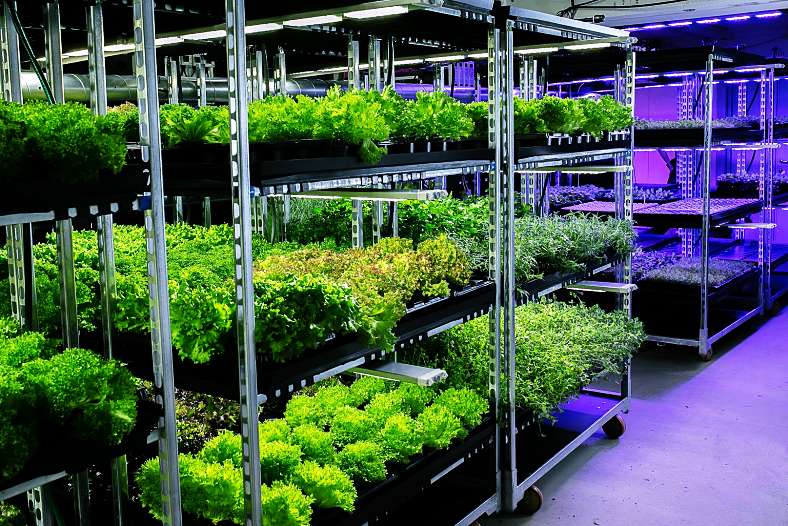
What is the best location for vertical farming and greenhouses?
When deciding on a production method, it is best to start by looking at the crucial factors. Location should be at the top of your list.
In a location where space is tight, and you do not have access to large amounts of freshwater but good access to affordable and renewable energy, vertical farming will be the best choice. It’s also an advantage if this location is close to a market with great demand for crops that are well suited to produce in vertical farming.
These can be various locally grown salads, microgreens, herbs, or berries that are grown without the use of pesticides.
In areas with virtually unlimited space, lots of natural sunlight, and where there are high energy prices (or the energy is fossil-based), greenhouses may be a better choice. In such cases, it may be difficult to justify the higher costs associated with vertical farming.
When we talk about location in this way, it must be seen in a larger context. Although it is possible to engage in greenhouse farming in Norway, it may make the most sense to engage in vertical farming due to the climate in large parts of the country.
The role of carbon footprints
Many who criticize vertical farming argue that you need a lot of energy to replace natural sunlight.
And if the energy comes from fossil energy sources, vertical farming does have a higher carbon footprint than greenhouse farming.
But there is an important factor to consider; In those cases where renewable energy is used in vertical farming, vertical farms have the opportunity to reduce the carbon footprint of various produce, which is usually transported over long distances.
The CEO of Agritecture, Henry Gordon-Smith, points to Norway and believes that vertical farming can become a great success because of the access to renewable energy.
Suppose you combine the reduced transport emissions with less use of fertilizers (which have a high carbon footprint during production) and less food waste. In that case, it becomes clear that energy use for light and ventilation in vertical farming is not the only factor for carbon footprints we must include in the calculation.
Taking this into consideration, vertical farming comes out on top.
LED lamps: variable costs
In vertical farming, costs associated with LED lamps to replace sunlight are one of the biggest expenses.
But the cost varies based on how efficient the lamps are and based on what you are going to grow. Different plants require different lighting conditions.
You can still expect that LED lamps will account for around 50-65 % of your energy costs.
It is also important to remember that LED lamps are being used more and more in greenhouse production. This is especially true during the winter months in northern climates.
How much light you need depends on location, season, and crops. Nevertheless, LED lights are not as intense in greenhouse farming as it is in vertical farming.
Food production requires large amounts of energy no matter which method you choose. However, vertical farming utilizes power very efficiently.
LED lamps now and in the future
LED lamps are one of the biggest costs associated with vertical farming. You must expect to replace the lights after 5-10 years, depending on the quality of the lamps you start with.
Fortunately, LED lamps are becoming more and more efficient. In addition, the price is constantly dropping, which will make it cheaper to buy or replace LED lamps in the future.
Currently, LED grow lights convert 55% of their energy consumption into light (on average). This means that approximately 45 % is converted into heat. It is a big improvement from old incandescent bulbs, and researchers are working to improve it even further.
Nevertheless, this means that the LED lamps used in vertical farming and greenhouses increase temperature.
This is not always a problem in a greenhouse, especially because LED lamps are preferably only used in the colder months. Greenhouses are also often designed with natural ventilation in case it gets too hot.
In vertical farming, on the other hand, the production facility quickly heats up. Therefore, you are dependent on a sound ventilation system or to recycle the heat for something else. Excess heat is often used to heat a nearby building, not to waste it.
Developments in LED technology will also make it possible to cultivate a more extensive range of crops on vertical farms.
Related article: Vertical farming research

Climate control in vertical agriculture and greenhouses
In addition to the costs associated with lighting, you must also include costs for climate control and dehumidification.
Because vertical farming takes place in closed units, climate control, and dehumidification costs will be higher than in greenhouse farming.
You can estimate that approximately 20 % of the energy consumption in vertical farms will go to ventilation. About 10 % of energy consumption goes to dehumidification.
The need for this will increase with each level added to a vertical farm. This compensates for more lamps that emit heat and more plants that emit vapor.
In cooler regions, greenhouses can save energy by using natural ventilation to regulate the temperature. For example, parts of the walls can be opened to let in cooler air, while hot air can be vented through hatches in the ceiling.
You can also use evaporative cooling systems that use less energy than air conditioning. The problem is that such a system increases the humidity, which must be handled.
Greenhouses are also more exposed to temperature fluctuations on the outside, which means that operating costs will vary more. Compared to vertical farms, it will also take longer for the crops to be ready for harvest. This is especially true in cold northern climates.
Related article: How to reduce vertical farming energy consumption?
Summarizing arguments for choosing vertical farming
We have now looked at various advantages and disadvantages of vertical farming and greenhouse production. This is the takeaway to keep in mind.
A big advantage of vertical farming is that it often can make use of existing buildings. They might need some modifications, but it still reduces start-up costs.
Stable production
By operating indoors, you have several apparent benefits. First, better insulation makes the production facility less affected by the outdoor climate. That way, your crops stay protected from unpredictable changes in weather and insect infestations.
This also stabilizes the production itself. Indoors, you can create perfect lighting conditions and climatic conditions everywhere, resulting in faster and more predictable production.
This is a value in and of itself and opens up for more leisure and predictable everyday life.
This can also help create better contracts with the market. With production on a vertical farm, there is a significantly greater probability that you can deliver on your forecasts throughout the year.
By controlling all the factors necessary for good plant production, you can begin optimization.
This means you can easily make more adjustments to increase production and give the results you want.
Control of production
In vertical farming, you also have greater control over your production.
For example, it is easier to maintain high CO2 levels indoors since you never have to switch to outdoor air. You can add light that increases the properties you want (biomass, vitamins, leaf size, aroma, taste) and maintain optimal humidity throughout the growing season.
If needed, indoor production can also be split into different climate zones. This makes it easier to move plants from one perfect climate to the next for optimal growth.
In vertical agriculture, you can also experiment with extending the daytime hours. PRIVA has tested this on tomatoes. They used a 35/4 photoperiod (35h light, 4h dark), which would never have been possible in a greenhouse.
All these factors mean that you will increase efficiency and see faster growth and more predictability than you can ever achieve in a greenhouse (especially in colder climates).
Many plants are not well-suited for vertical farming, like larger plants such as cauliflower or broccoli. Therefore, we must continue to grow these in greenhouses or outdoors for efficient production.
That said, vertical farming can be an affordable and sound investment for these products, as you can use the facility for germination and propagation with excellent results.
Related article: Vertical farming vs. traditional farming

